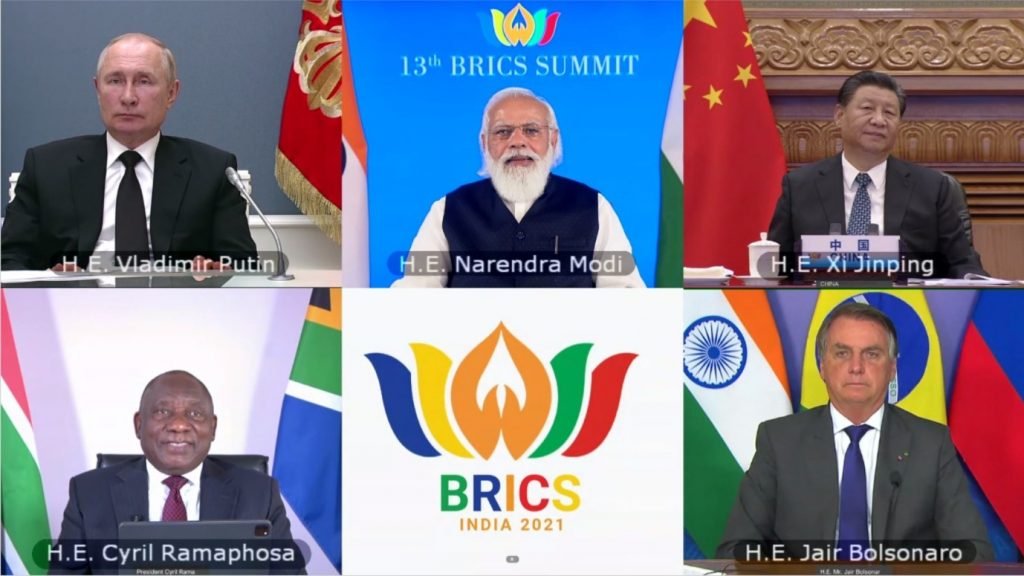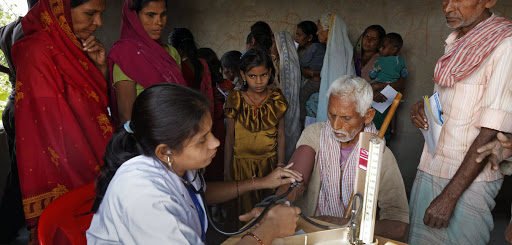India and the Latin American countries should explore engagements in the non-traditional sectors: Dr. Aparaajita Pandey

Latin America and the Caribbean (LAC) remains one of the lesser engaged regions in India’s foreign policy and as such the full potential of India-LAC relations is yet to be explored. In this interview with The Kootneeti, Dr. Aparaajita Pandey, Assistant Professor at Institute of Public Policy, Amity University, Noida, tells Niranjan Marjani, Consulting Editor of The Kootneeti, about the challenges in India-LAC relations and how India’s engagements with this region can be strengthened.
Niranjan Marjani: Last one month has seen India accelerating its outreach to the Latin American countries. Minister of State for External Affairs Meenakshi Lekhi visited Colombia at the start of September, while the Colombian Vice President Marta Lucía Ramírez visited India at the start of this month. External Affairs Minister Dr. S. Jaishankar visited Mexico from 26-28 September. How do you look at this outreach?
Dr. Aparaajita Pandey: Latin America and the Caribbean (LAC) offers extensive opportunities for India – trade partnerships, energy and food security, defence cooperation, greater cultural exchange; and while both sides are quite aware of these opportunities, not a lot has been done to explore the complete potential of these possibilities. Traditionally, Latin America and the Caribbean have remained relatively lower on the list of potential partners for India and that can be blamed on several factors, geographical distance and language being the most prominent ones. However, a shift in the outlook towards the LAC region has been noticed and greater engagement with the region is being pursued. The recent visits of dignitaries on both sides are a manifestation of the target towards greater engagement between LAC and India. It is an addition to the rising frequency of high-level visits between India and LAC, which had suffered a setback due to the pandemic but now has begun once more.
These visits are emblematic of not just the private sector but also the public sector’s growing interest in the LAC region. It is a welcome step in the direction of greater cooperation and strengthening relations that has been catalyzed by the current government.
NM: There is a lot of scope for development in India-Latin America relations. What have been the reasons for both the entities remaining distant?
AP: There is immense potential for India-LAC relations and it is a potential that is recognized and acknowledged by people on both sides for years, however we are yet to capitalize on that potential. India and LAC have traditionally been victims of the proverbial tyranny of geography; the sheer physical distance between the two regions has conventionally seen as too great to facilitate trade, which has in turn led to a general lack of direct connectivity issues. There are very few flights from India to LAC and the ones that exist are usually quite expensive. The language barrier has also been perceived as a hurdle too problematic to cross in the past; which led to limited cultural exchange between the countries. The outlook on these has changed in the past few decades and even more so in the last few years, with technological advances and expanding trade the regions have gotten closer and slightly more aware of the culture. However, it has certainly not reached its potential.
India and LAC have also experienced bureaucratic obstacles. The administrations on both ends have often found it difficult to synergize their fashion of functioning and collaborating with one another which is also gradually changing. India and LAC have never been top priorities for each other. One cannot deny that the socio-political realities for both regions have not been mutually inclusive. For LAC the US has been a constant presence and acted as the largest trade partner for many countries since the Cold War. India looked as recently independent nations from Africa, West, South, and South East Asia primarily; for South- South cooperation and also for trade partnerships.
This legacy of neglect of both sides has hindered the strengthening of relations between India and LAC. However, there has been an immense growth in trade between the two regions. Information Technology (IT), pharmaceuticals, agricultural equipment, automobiles and auto parts, food products are only some of the sectors that show a robust trade pattern between India and LAC, and if the trends are to be believed; one can expect exponential growth in trade between the two regions which would inevitably lead to a deepening of ties.

NM: The Colombian Vice President Marta Lucía Ramírez said that Colombia could be a bridge between India and Latin America. Does this mean India needs to reset its focus on that region?
AP: The visit by the Colombian Vice President is a welcome event. It certainly points towards a desire for stronger relations between Colombia and India. The Colombian economy has shown signs of growth and the India’s policy of Vaccine Maitri (Vaccine Friendship) during the pandemic has earned India goodwill around the world including LAC. Colombia and India both recognise the potential for trade and defence cooperation as well as newer ventures like cyber security and space cooperation.
As far as a reset of focus in concerned, I would not call it that. LAC has become important for India and we have been exploring opportunities for greater collaboration across the continent. Those goals have not changed. An increased engagement with Colombia does not translate to decreased engagement with the rest of the region.
NM: Do India and Latin American countries need more bilateral engagements since India engages with some of the countries such as Argentina, Brazil and Mexico through G20 and BRICS?
AP: Yes, bilateral engagements with countries would certainly help in building stronger ties between India and the respective countries. India has been attempting to sign Free Trade Agreements (FTAs) with Argentina and Chile. However, at times there are technical hurdles; for instance, both Argentina and Chile are members of MERCOSUR and the MERCOSUR charter states that member countries can’t sign FTAs with non-member countries. Therefore, India has Preferential Trade Agreements (PTAs) with Argentina and Chile.
Bilateral engagements should be pursued by both sides. They would provide the countries with an opportunity to engage further.
NM: Could the Indo-Pacific Region become an area of common interest between India and the Latin American countries?
AP: This is not an easy answer of a linear one. The Indo-Pacific Region for Latin America is not just a consideration about greater trade and/or strategy. It has the added complexity of the role that the US and its interventions have played in Latin America. One must carefully study the Latin American response to the Trans-Pacific Partnership (TPP), the Comprehensive and Progressive Agreement for Trans-Pacific Partnership (CPTPP), and then the Regional Comprehensive Economic Partnership (RCEP). While LAC recognizes the significance of the Indo- Pacific region for its mercantile and strategic significance; one cannot and should not expect a singular and uniform response from all of Latin America as a whole. The Latin American continent is not a monolith and has categorically refrained from having uniform reactions or responses to the same event/object/treaty.
The Indo-Pacific does provide possibilities and opportunities for India and Latin America but the Indo-Pacific will be much more significant to India due to its geopolitical realities than it would be for Latin America. Anticipation of equal engagement in the Indo-Pacific from India and LAC is not a very practical target.
NM: China has increased its influence in Latin America and the Caribbean (LAC) in the past 20 years. China’s trade with the region grew by 26% between 2000 and 2020. China aims to double the trade with the LAC to $700 billion by 2035. Since China is primarily competing with the US in the region, would this facilitate India’s engagements with the LAC given the strengthening of the India-US relations?
AP: India would have greater engagement in the region due to its ability to carve a niche for itself in the Latin American Market and not due to strengthening of the Indo-US relations. India has presented itself as a reliable, un-problematic partner, with no hidden or ulterior motives. India has established itself as a trade partner for the region and that has happened solely on the strength of the Indian economy and manufacturing capabilities. The larger geopolitical considerations between the US and China and their manifestation in the Latin American market have very little impact on the Indian performance in the Latin American market.
NM: While soft power is considered as an important instrument of India’s foreign policy, do you think more reciprocity is needed in this area? Meaning that soft power of the Latin American countries needs more exposure in India just as India’s soft power (yoga, food, music, Bollywood etc.) is projected abroad?
AP: There is definitely a gap when it comes to awareness about the culture, heritage, history, food etc. when it comes to Latin America and the Caribbean. A greater showcase of the culture of the region that is more accessible to the general public and not just a chosen few would held greatly in arousing excitement and curiosity about the region. Countries across Latin America offer vastly different experiences to those willing to explore but there is very little initiative to generate awareness about it. A greater focus of soft power through cultural diplomacy would certainly help in augmenting people to people contact between India and LAC.
NM: India is exploring engagements in the fields of biotechnology, space technology, green energy, electric vehicles and even vaccine production with the Latin American countries. Do you think these emerging sectors would also push for deeper engagements between India and Latin America in economic and strategic sectors?
AP: Non-traditional sectors of engagement whether in security or in energy or environmental conservation should be explored. They provide the potential for joint research, academic exchanges, joint defence exercises and general South-South cooperation. They would inexorably lead to stronger ties between the regions which would in-turn facilitate greater engagement in traditional sectors like trade and strategy.



















